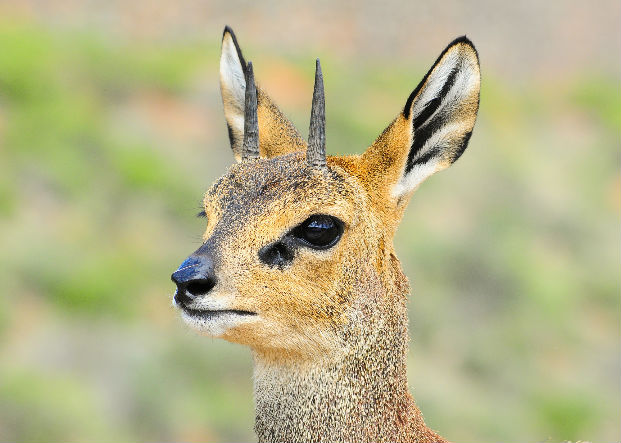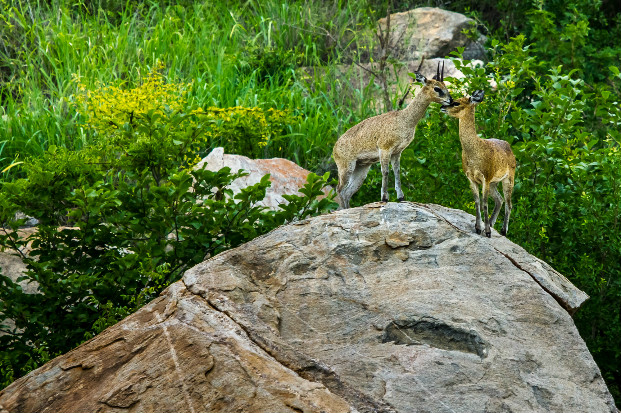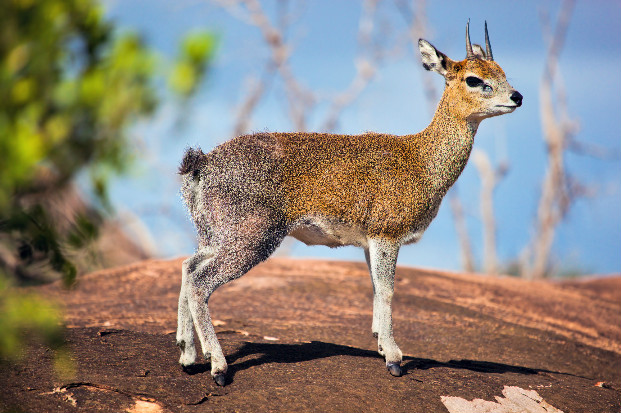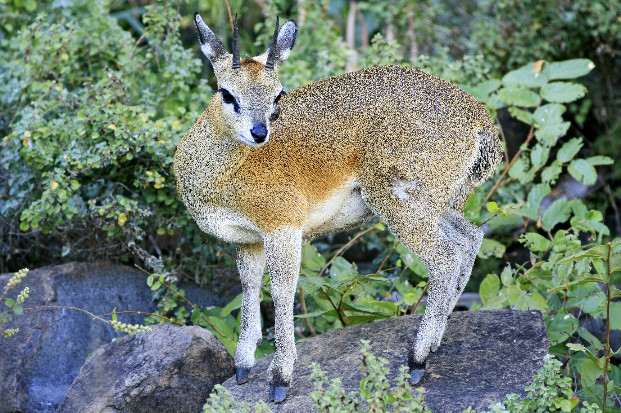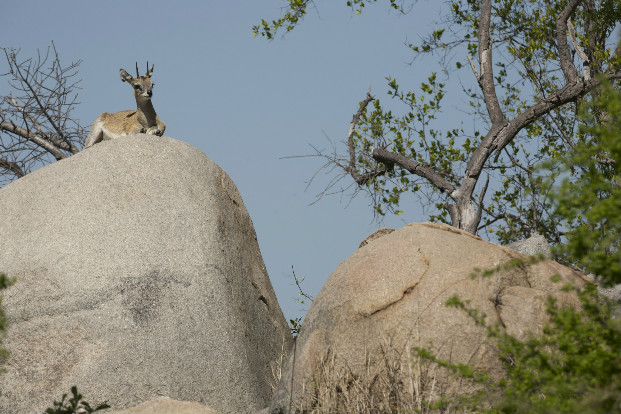This small antelope is at home on cliffs and other rocky terrain where it agilely jumps from rock to rock. It lives in life-long pairs and is seldom apart from its mate. The male can often be seen standing prominently on a rock keeping watch for intruders and predators.
Vote for the fact you find most fascinating
Male klipspringers will remain standing to keep watch whilst a female rests or tends to her lamb.
A klipspringer regulates its temperature by trapping an insulating layer of air in its hollow fur which lays flat against the skin.
A klipsringer will leap from rock to rock on its tiptoes. It demonstrates surefooted confidence due to its rubbery hooves that stop it from slipping and which also absorb the shock.
The golden sheen of a klipspringer’s coat and its rounded back help it blend into the rocky habitat when it freezes at the threat of danger.
To help the klipspringer judge distances when jumping around cliffs and rocks it has a muzzle which is sharply tapered and eyes that are set forward.
In southern Africa only male klipspringer have horns but in some parts of East Africa females will occasionally possess horns.
Klipspringers pair up for life and will seldom be apart from one another. Whilst one feeds the partner will keep watch.
The klipsringer’s name is derived from the Afrikaan’s word “klip” meaning rock and “springer”, jumper.



